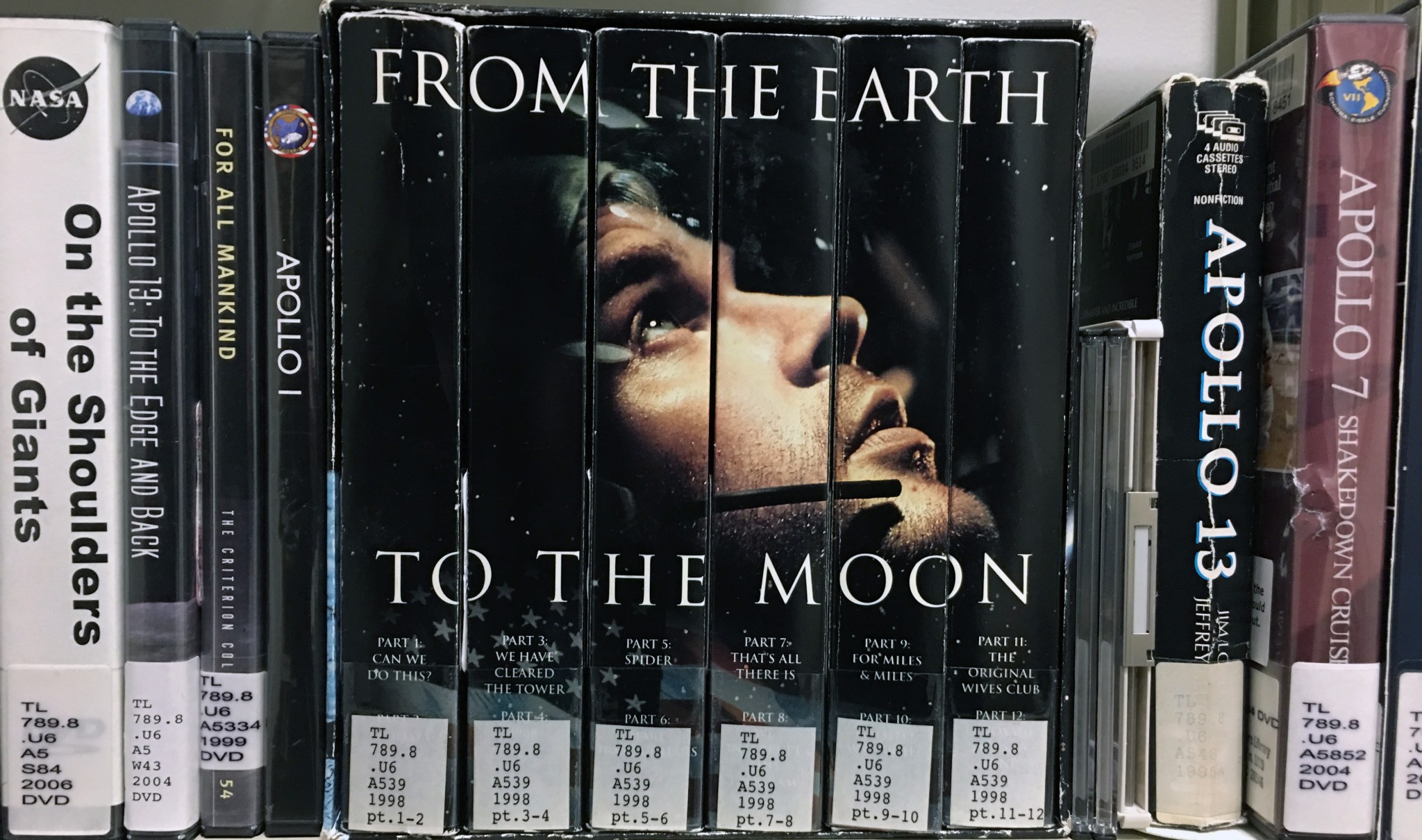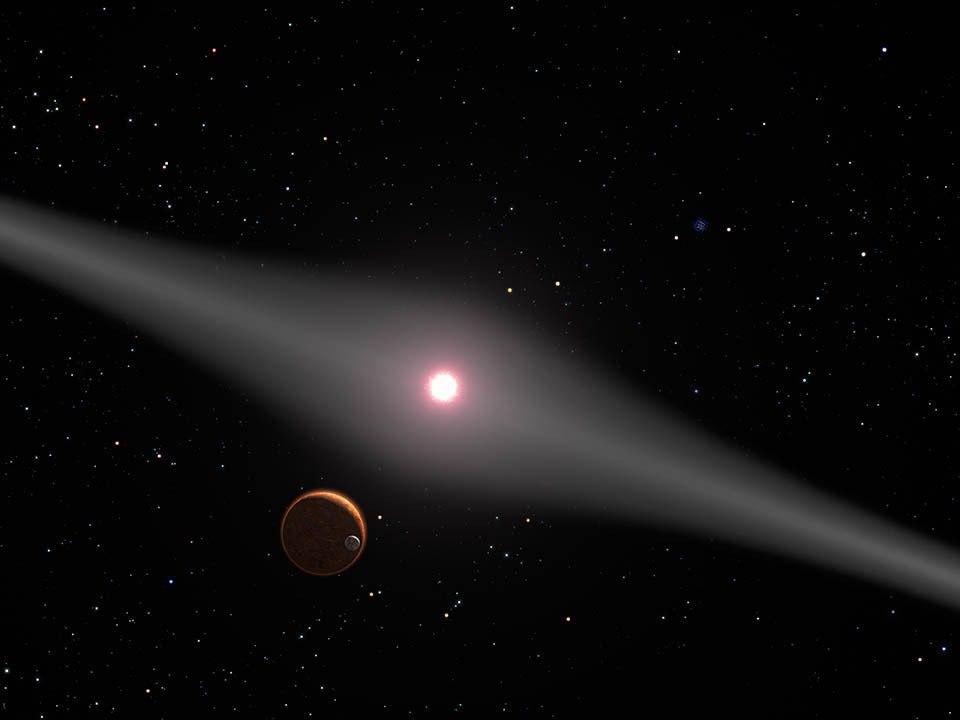NASA POLICIES & STANDARDS – BOOKS – REPORTS & ARTICLES – NASA PROGRAMS – NASA VIDEOS & ANALOGS – SLIDE PRESENTATIONS – OTHER WEBSITES
“Mankind is drawn to the heavens for the same reason we were once drawn into unknown lands and across the open sea. We choose to explore space because doing so improves our lives, and lifts our national spirit.”
– President George W. Bush, January 14, 2004
America is heading back to space.
On December 11, 2017, in the Roosevelt Room of the White House, representatives of the commercial space sector, NASA officials, Apollo 17 astronaut Harrison “Jack” Schmitt and other astronauts, and members of the administration witnessed President Donald J. Trump signing the Space Policy Directive 1, a directive intended to return American astronauts to the moon and to initiate long-term human space exploration.
This signing ceremony took place exactly 45 years after astronaut Jack Schmitt and Apollo 17 commander Gene Cernan left the last human footprint on the moon in 1972.
We have learned that humans can survive living on the ISS station in low Earth orbit (LEO), or spend time exploring the moon, but to colonize the moon or other worlds presents unique challenges.
Earth has all the ingredients to protect and sustain life. Exploration missions that leave the Earth’s protective sphere, however, will have to overcome many challenges, from conditions in space such as cosmic radiation and hazardous environments to human-specific conditions such as space adaptation syndrome (motion sickness), spatial memory, visual motor performance, bone loss, and the physiological and psychological impacts of living in cramped quarters in zero or low gravity.
Space exploration is more than seeing what is beyond the horizon—exploration also helps us to understand more about our planet, our solar system, our universe, and ourselves. At the very core of human space exploration is the desire to explore the unknown and extend human presence deeper into the solar system.
As our forebears braved the unknown, sailing the seas to discover new worlds, space pioneers will sail the cosmos to find other worlds in our universe, seeking to blaze the trail for the next generation and beyond.
NASA is charting the course for long-term human space exploration. This webpage covers resources on the challenges of long-term human space exploration as we venture deeper into space to find other worlds. All items are available at the Headquarters Library, except as noted. NASA Headquarters employees and contractors: Call x0168 or email (library@hq.nasa.gov) for information on borrowing or in-library use of any of these items. Members of the public: Contact your local library (https://publiclibraries.com/) for the availability of these items. NASA Headquarters employees can request additional materials or research on this topic.
The Library welcomes your comments or suggestions about this webpage.
NASA POLICIES AND STANDARDS
The following standards, policies, and procedural requirements can be accessed by anyone through the NASA Online Directives Information Systems or through the NASA Standards website
- NPR 8900 .1B – NASA Health and Medical Requirements for Human Space Exploration
- NPD 8900.5 – NASA Health and Medical Policy for Human Space Exploration (Revalidated 3/28/17)
- NASA-STD-3001, Vol. 1- NASA Space Flight Human System Standard, Volume 1, Revision A: Crew Health
- NASA-STD-3001, Vol. 2 – NASA Space Flight Human System Volume 2: Human Factors, Habitability and Environment Heath
- NPR 7120.5E NASA Space Flight Program and Project Management Requirements (Updated w/Change 18)
BOOKS
Institute of Medicine of the National Academies. Health Standards for Long Duration and Exploration Spaceflight Ethic Principles, Responsibilities, and Decision Framework. Washington, D.C.: The National Academies Press, 2014. ISBN: 978-0-309-29657-1.
RC 1151 .S64 .I5 2014 BOOKSTACKS
Available Free to All
DOI: https://doi.org/10.17226/18576
Longnecker, David E. A Risk Reduction Strategy for Human Space Exploration of Space, A Review of NASA’s Bioastronautics Roadmap (2006). Washington, D.C.: National Academies Press, 2006. ISBN: 978-0-309-09948-6.
RC 1135 .R57 2006 BOOKSTACKS
Available Free to All
DOI: https://doi.org/10.17226/11467
National Research Council (U.S.). Committee on the Evaluation of Radiation Shielding for Space Exploration. Managing Space Radiation Risk in the New Era of Space Exploration. Washington, D.C.: National Academies Press, 2008. ISBN: 978-0-309-11383-0.
QB 461 .N375 2008 BOOKSTACKS
Available Free to All
DOI: https://doi.org/10.17226/12045
National Research Council (U.S.). Committee for Evaluation of Space Radiation Cancer Risk Model. Technical Evaluation of the NASA Model for Cancer Risk to Astronauts Due to Space Radiation. Washington, D.C.: National Academies Press, 2012. ISBN: 978-0-309-25305-5.
RC 1151 .R33 N385 2012 BOOKSTACKS
Available Free to All
DOI: https://doi.org/10.17226/13343
Nicogossian, Arnauld E., Williams, Richard S., et al. Space Physiology and Medicine: From Evidence to Practice, 4th ed. New York, NY: Springer Science & Business Media, 2016. ISBN: 978-1-493-96650-9.
RC 1150 .S63 2016 BOOKSTACKS
National Aeronautics and Space Administration and Vakoch, Douglas A. (Edited by). Psychology of Space Exploration, Contemporary Research in Historical Perspective. Washington, D.C.: National Aeronautics and Space Administration, 2011. ISBN: 978-0-160-88558-3.
Available Free to All
REPORTS AND ARTICLES
Boddy, Jessica. (2006). From shrinking spines to space fungus: The top five dangers of space travel. Science. Retrieved from, https://www.sciencemag.org/news/2016/12/shrinking-spines-space-fungus-top-five-dangers-space-travel
DOI: 10.1126/science.aal0451
Lloro, V., Giovannoni, L.M., Lozano-de Luaces, Lloro, I. and Manzanares, M.C. (2020). Is oral health affected in long period space missions only by micogravity? A systematic review. Acta Astronautica, 167, pp. 343-350. Retrieved from:
https://www.sciencedirect.com/science/article/pii/S0094576519313943?via%3Dihub
DOI: https://doi.org/10.1016/j.actaastro.2019.11.015
Romero, Elkin., Francisco, David. (2020). The NASA human system risk mitigation process for space exploration. Acta Astronautica, 175, pp. 606-615. Retrieved from: https://reader.elsevier.com/reader/sd/pii/S0094576520302617?token=3CA029364F3818319B49A03E2040EB325EA5A6BFD459DAF2305F62B78142E23F7A18EB567440A0EAAE9DAA569C673E8A
DOI: https://doi.org/10.1016/j.actaastro.2020.04.046
Angeloni Debora., Demontis, Gian Carol. Endocrine adaptations across physical and psychological stressors in long-term space flights. (2020). Endocrine and Metabolic Research, 11, pp. 21-26. Retrieved from:
https://reader.elsevier.com/reader/sd/pii/S245196501930105X?token=61688CBEF0F63F4433A257D13D066EAF561EE343BD209A15C8A59C98889B3CB511014D342BDC90BA4F8EFDCDE017878E
DOI: https://doi.org/10.1016/j.coemr.2019.12.005
Lewis, Cathleen. (2017). Studying Long-Duration Human Spaceflight. Smithsonian National Air and Space Museum Space History, https://airandspace.si.edu/stories/editorial/studying-long-duration-human-spaceflight
Parks, Jake. (2018). How does space change the human body? Astronomy. Retrieved from: https://astronomy.com/news/2018/02/how-does-space-change-the-human-body
NASA PROGRAMS
NASA’s Human Research Program
https://www.nasa.gov/hrp
https://humanresearchroadmap.nasa.gov/
NEEMO – NASA Extreme Environment Mission Operations Project
https://www.nasa.gov/mission_pages/NEEMO/index.html
Explore Moon to MARS
https://www.nasa.gov/topics/moon-to-mars/preparing-to-go
NASA VIDEOS AND ANALOGS
What happens to an astronaut’s body in space
https://www.businessinsider.com/space-antigravity-radiation-affect-human-body-2019-9
NASA 360, The Future of Human Space Exploration
https://www3.nasa.gov/sites/default/files/nasa_360_-_fohse.mp4
What is One of the Greatest Challenges for an Astronaut on the Journey to Mars?
https://www3.nasa.gov/sites/default/files/atoms/video/lrc_20171010_journey-to-mars_ne1111.mp4
NEEMO Video Gallery
https://www.nasa.gov/mission_pages/NEEMO/videos
NASA Analogs Missions
https://www.nasa.gov/analogs/nsrl
What are the Next Generation Spacesuits?
https://www.nasa.gov/feature/what-are-the-next-generation-spacesuits
SLIDE PRESENTATIONS
Antonsen, Erik. L. (2019). Human System Risk in Spaceflight. Retrieved from NTRS (ntrs.nasa.gov), 20190032988.
Easter, Benjamin. (2019). Medical Risks and Capabilities for Human Exploration Spaceflight. Retrieved from NTRS (ntrs.nasa.gov), 20190025249.
OTHER WEBSITES
Smithsonian National Air and Space Museum
https://airandspace.si.edu/



























